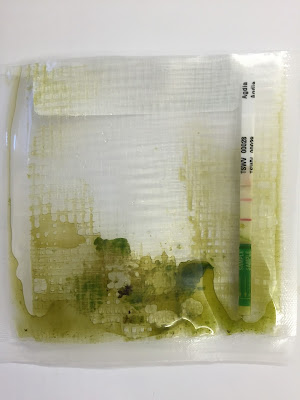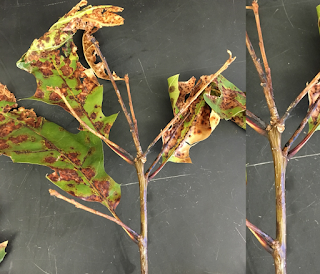 |
| Rust pustules on the underside of the leaf (Photo: J. French, NMSU-PDC) |
Rust on coral bells is caused by Puccinia
heucherae, which only infects members of the genera Heuchera and Saxifraga. A wide range of plants can be infected by rust fungi, but individual
rust fungi have a very limited host range. The most common symptom of rust
infection is the production of powdery pustules on the leaves, stems, twigs,
flowers and fruit of susceptible plants. Pustules are most common on the lower
leaf surface and stem. Pustules may be bright yellow, orange, orange-red,
reddish brown, chocolate brown, or black in color. These spots enlarge and may
coalesce as the infection builds. Rusted leaves often turn yellow, die, and
drop prematurely. Rust fungi infect only the plant’s aboveground parts,
and while rust fungi generally do not directly kill their host plants, severe
infections ultimately may lead to death by other factors (winter-kill or other
diseases). Spores are moved short distances by wind, insects, rain, and
animals. Water on the plant surface (aka leaf wetness) is required for spore germination and
infection. After the plant is infected, leaf wetness is not needed for continued
disease development. Disease builds quickly during periods of high humidity.
 |
| Rust on the upper leaf surface of coral bells (Photo: Jason French) |
 |
| Teliospores of Puccinia sp. (Photo: Jason French, NMSU) |















